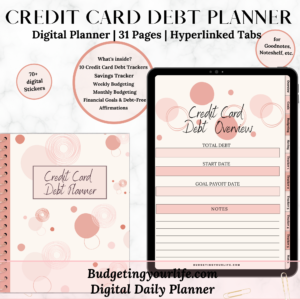
If you find managing money tedious or you struggle to manage your finances, the 50/30/20 budget rule approach might be just what you need. Using this strategy, you can ensure that your funds are secure for the future while allowing you to live a comfortable life. In addition, this approach is not as tricky or strict as other budgeting rules since it only requires you to split your expenses into three categories: needs, wants, savings, or debt.
Who created the 50/30/20 rule?
Senator Elizabeth Warren popularized the 50/30/20 rule in All Your Worth: The Ultimate Lifetime Money Plan. Senator Warren designed this book as a rule of thumb to help working-class families plan their spending and prepare for the future. She noticed that most families weren’t planning financially due to their income not being enough to cover expenses during retirement. She realized that if families calculate it out, applying the 50/20/30 budgeting rule every month can give them at least two decades’ worth of money set aside! Like regular savings, the earlier you start, the more money you have.
How does It work?
The 50/30/20 budget rule is a straightforward strategy that removes the complication of saving or managing money. The best ways to budget are often the simpler ones. This strategy is easy to follow and applies equally well to most financial situations. Whether you are just starting, need more discipline in your finances, get back on track after a financial setback, or ensure there isn’t too much stress when dealing with unexpected expenses.
Since this budget rule only requires you to track and divide your expenses into three categories, It reduces the time you spend budgeting every month. In addition, it tells you exactly what percentage of your funds to put towards your needs, wants, and financial goals.
Needs (50%)
This category includes necessary monthly expenses such as mortgage, rent, groceries, car insurance, health care expenses, utilities, and credit card bills.
There is no need to specify exact percentages as long as you stick close to the suggested 50%. It’s better to track your expenses so you know where your money is going. If your necessary expenses take up more than half of your income, try cutting down the costs or taking some cash from your wants fund.
The “needs” category doesn’t include your shopping habits, subscriptions, or dining out. However, as mentioned in the next section, these things will fall in your “want” categories.
Wants (30%)
Wants are all things that are not essential, things that you choose to spend your money on, which include entertainment and any other leisure expenses. Some examples are going out to eat, vacations, unnecessary monthly subscriptions and memberships, and shopping. Everything from the “wants” category is optional; these are all expenses you can live without.
This category also includes non-essential upgrades, such as buying an expensive car when your previous car had no mechanical issues or getting the latest smartphone every year. In short, wants are all those extra bucks we spend on things that make us happy because they are not necessities!
Savings or debt (20%)
The remaining 20% of your income can go towards your savings, debt, or investments. It is recommended to have at least six months of emergency savings. Although it can be difficult for many people to save six months of emergency funds, you must have enough money for rainy days or unexpected financial setbacks.
Having money saved can give you peace of mind when you tackle your debt. However, if you are in debt, avoid putting off your payments. Otherwise, you can get stuck in an endless cycle of owing, and your interest rate will keep piling up.
Example of the 50/30/20 Plan in Action
Let’s say John makes $5,000 a month. Using the 50/30/20 plan, He splits $2,500, which helps with his rent, food, and bills. This leaves him with $1,500 for flexible spending and $1,000 to go into his savings and put some money toward his debt. If John sets a goal to pay off his debt, he must subtract from his flexible spending to contribute more to his financial goals.
50/30/20 Rule vs. Other Budgeting Methods
The 50/30/20 rule isn’t the only budgeting technique. There are a few other budgeting approaches that might better suit you:
- 80/20 Rule: In this method, you set aside 20% of your paycheck into savings. The rest of the money can be spent on necessities, leisure activities, or entertainment. With this rule, you don’t have to keep track of your spending. This technique is more lenient, but it doesn’t divide your income into categories.
- 70/20/10 Rule: You may have noticed that this rule is similar to the 50/30/20 rule. This is because the 70/20/10 rule is a modified version of the 50/30/20 budget rule. This saving rule divides your budget into the following categories: 70% for living expenses, 20% for debt payments, and 10% for savings.
Is the 50/30/20 rule Right for you?
Overall, the 50/30/20 rule is a great way to manage your funds. However, choosing whether this approach is right for you depends on your circumstances. For example, a potential issue with the 50/30/20 budget is that, depending on your income, 50% may not be a large enough percentage to cover your needs. In addition, this budget doesn’t work well for higher-income earners as it calls for spending too much on wants than needs or savings.
Make Your Own 50/30/20 Rule.
If you feel like one of the categories doesn’t accurately represent your spending habits, feel free to tweak it according to your needs. For example, 60% of your funds can go toward your needs, 20% into your savings, and another 20% towards your leisure spending.
Your percentages may need to be adjusted based on your circumstances and goals. As stated before, the 50/30/20 budget rule can be a great way to manage your money. However, the most important thing to do is to find a system that works for you. Try this budgeting strategy, manage your expenses, and take a step towards a better financial future.










